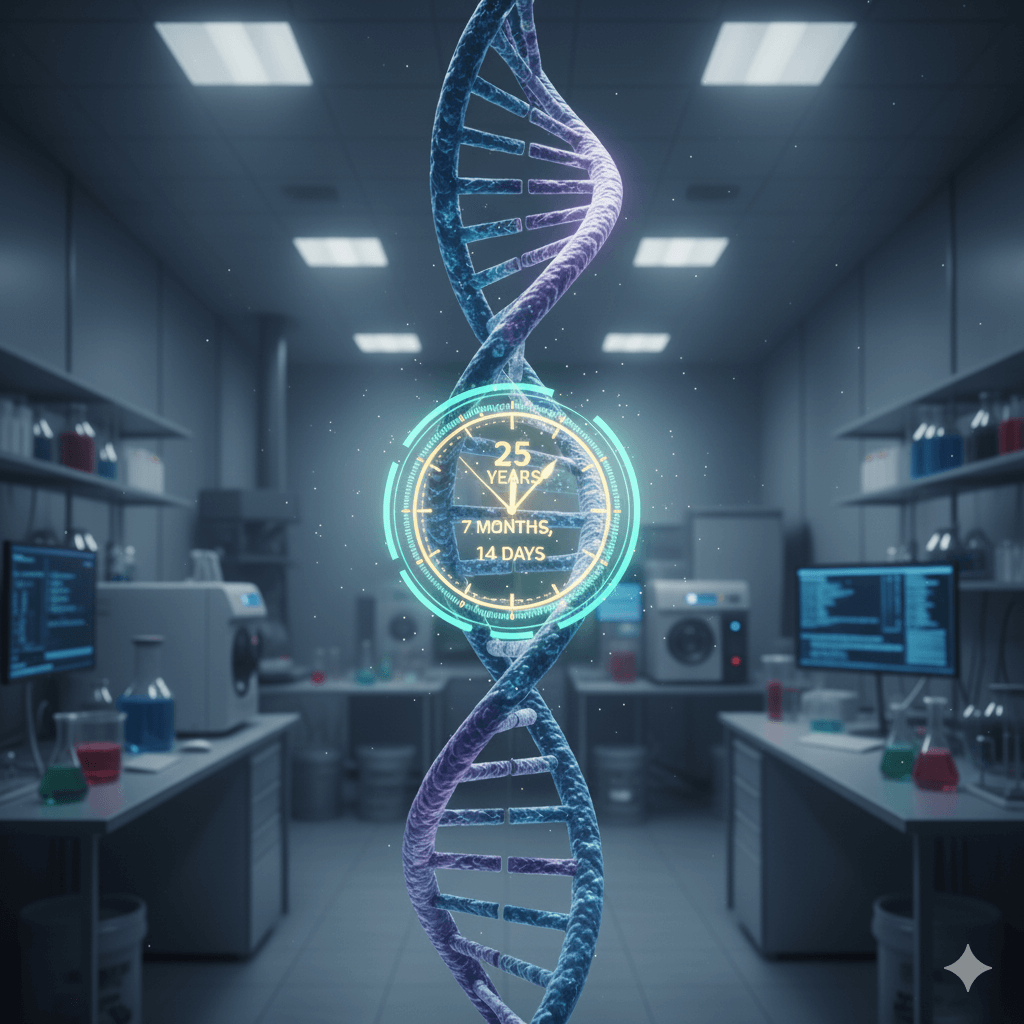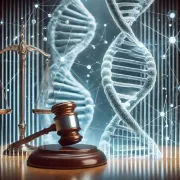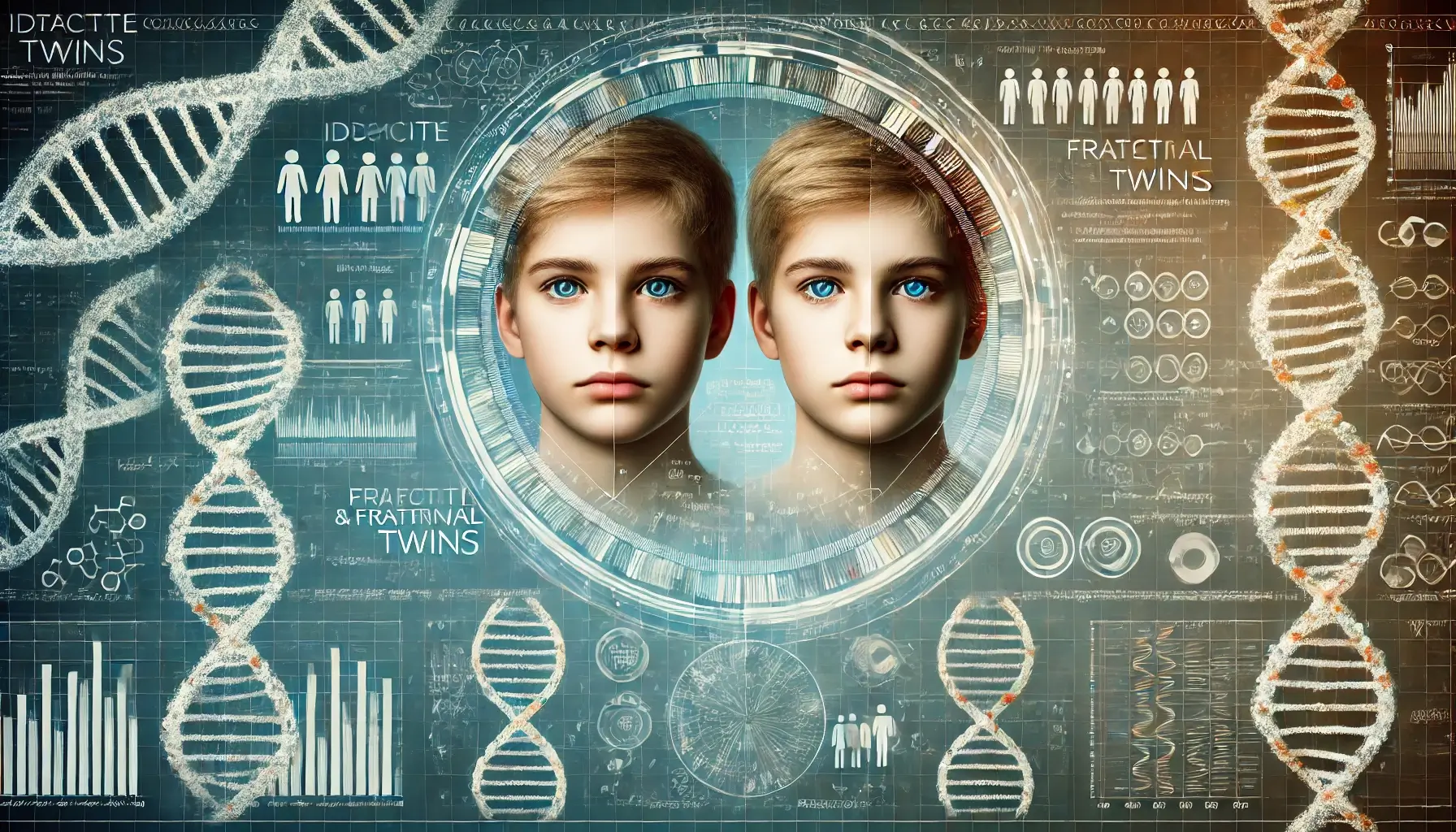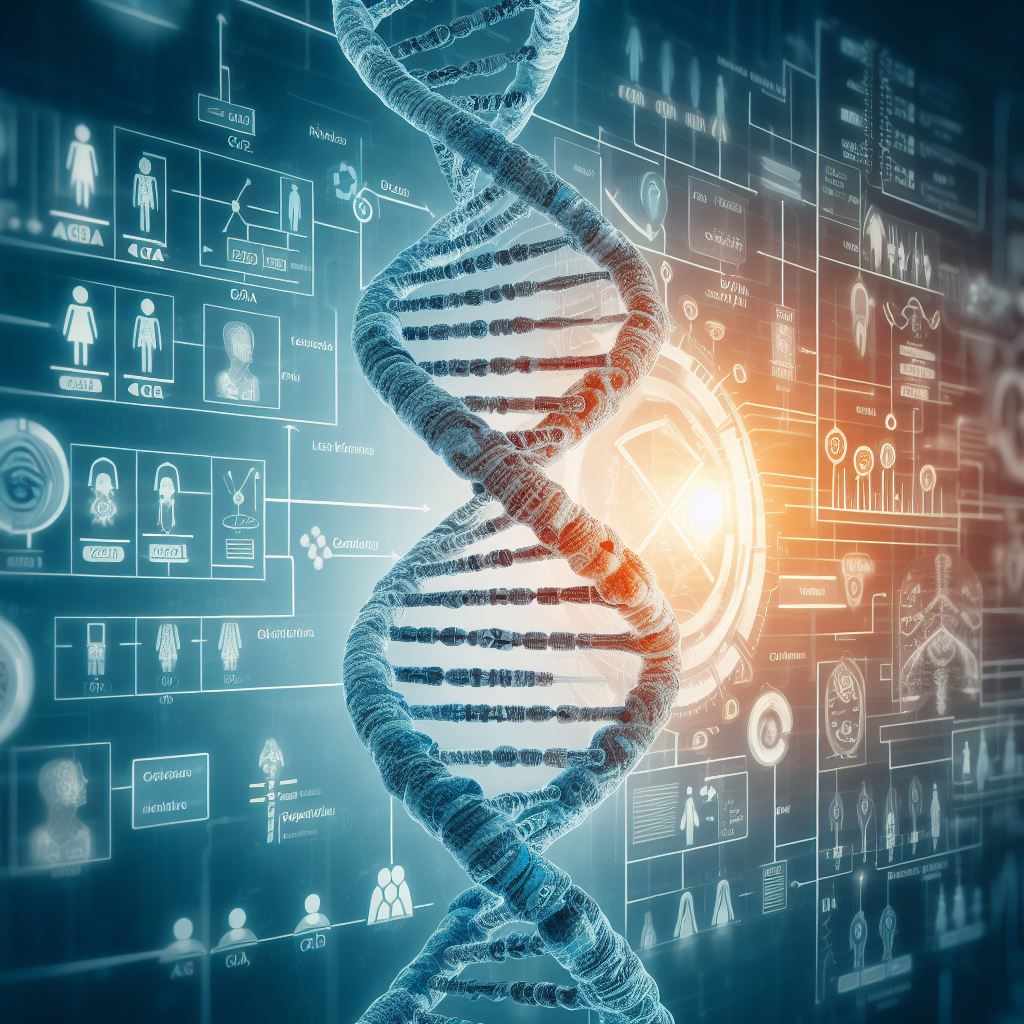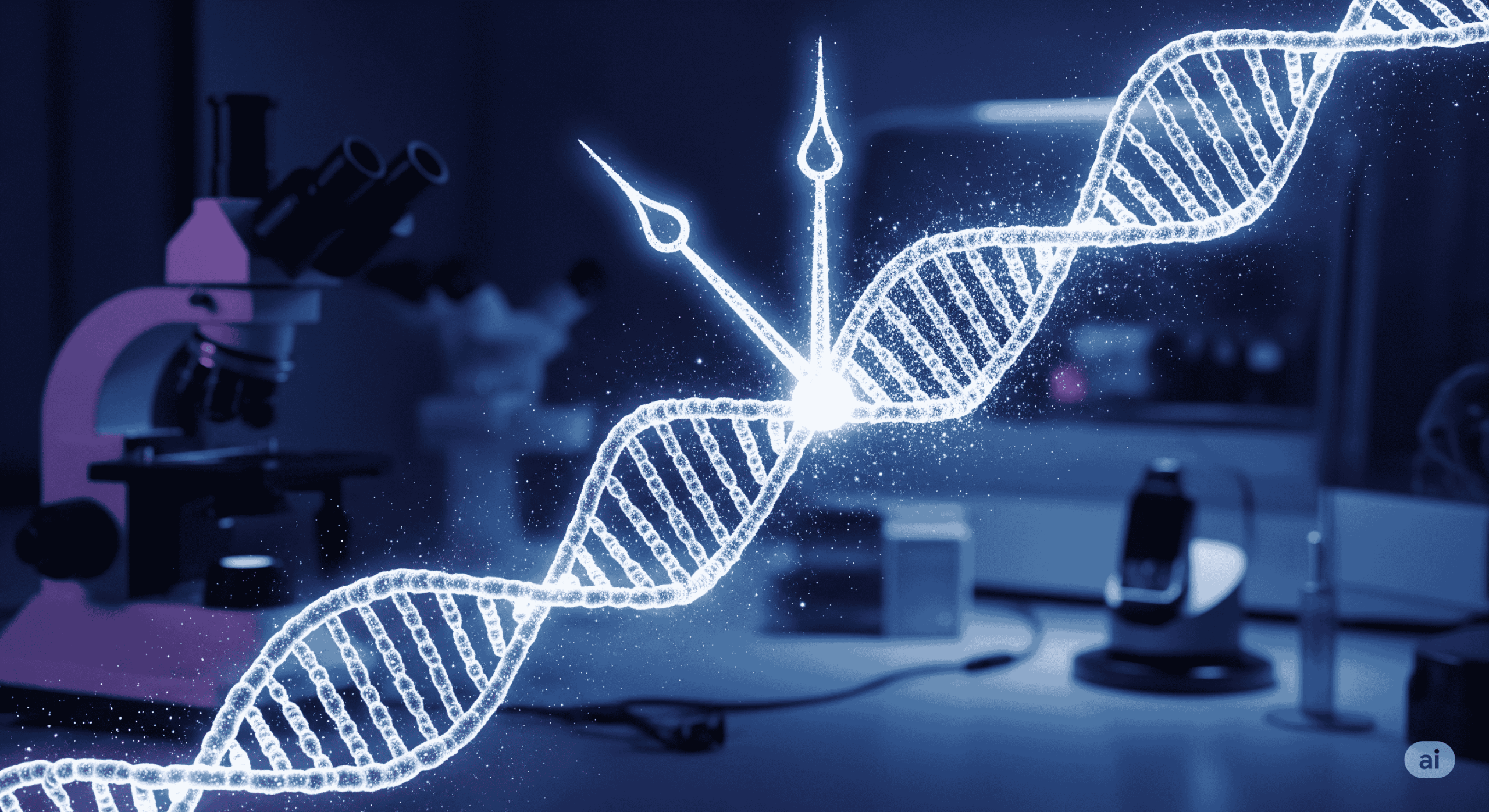When unidentified human remains are discovered, a cascade of questions immediately follows. Who was this person? What happened to them? And, crucially, how old were they when they died? For decades, forensic anthropologists have estimated age from skeletal morphology—the size, shape, and fusion of bones. While foundational, these methods can have wide error margins, especially for adults, often spanning a decade or more. This uncertainty can send an investigation down countless wrong paths, complicating the already heart-wrenching process of identification.
- The Foundational Science of Forensic Epigenetics
- What is Epigenetics? Beyond the DNA Sequence
- DNA Methylation: The Body’s Biological Scribe
- The Epigenetic Clock: Tracking Time in Our Cells
- The Core Forensic Process of Epigenetic Age Estimation in Detail
- Stage 1: Sample Selection and Preparation
- Stage 2: DNA Extraction and Bisulfite Conversion
- Stage 3: Amplification and Sequencing
- Stage 4: Analysis & Interpretation
- Advanced Applications & Modern Implications
- Beyond Age: What Else Can Epigenetics Tell Us?
- Case Study: The NJIT ForenBios Lab Breakthroughs
- Challenges, Controversies, and the Future of Forensic Epigenetics
- Conclusion
- FAQs:
But what if we could ask the DNA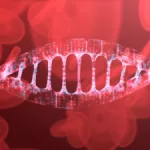 DNA, or Deoxyribonucleic Acid, is the genetic material found in cells, composed of a double helix structure. It serves as the genetic blueprint for all living organisms. Read Full Definition itself how old its owner was? Welcome to the revolutionary world of forensic epigenetics. This cutting-edge discipline looks beyond the genetic code to the chemical markers that manage it, unlocking a biological clock that keeps ticking throughout our lives. By analyzing these markers, specifically DNA methylation patterns, we are now able to estimate chronological age with unprecedented accuracyIn scientific and measurement contexts, "accuracy" refers to the degree of proximity or closeness between a measured value and the true or actual value of the measured quantity. Accuracy indicates how well a measurement reflects Read Full Definition.
DNA, or Deoxyribonucleic Acid, is the genetic material found in cells, composed of a double helix structure. It serves as the genetic blueprint for all living organisms. Read Full Definition itself how old its owner was? Welcome to the revolutionary world of forensic epigenetics. This cutting-edge discipline looks beyond the genetic code to the chemical markers that manage it, unlocking a biological clock that keeps ticking throughout our lives. By analyzing these markers, specifically DNA methylation patterns, we are now able to estimate chronological age with unprecedented accuracyIn scientific and measurement contexts, "accuracy" refers to the degree of proximity or closeness between a measured value and the true or actual value of the measured quantity. Accuracy indicates how well a measurement reflects Read Full Definition.
This article will guide you through the intricate science of the epigenetic clock. We will explore the foundational biology of DNA methylation, detail the step-by-step laboratory process used to extract and analyze these signals from the most challenging samples, and examine the real-world implications this technology holds for solving cold cases and bringing closure to families.
The Foundational Science of Forensic Epigenetics
To understand how we can estimate age from DNA, we first need to grasp a concept that governs how our genetic blueprint is used. The DNA sequence itself is remarkably static throughout life, but its expression—which genes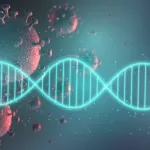 Genes are DNA segments (or RNA in some viruses) that dictate cellular processes, traits, and hereditary information, promoting genetic diversity and evolution in living organisms. Read Full Definition are turned on or off—is dynamic. This layer of control is called epigenetics.
Genes are DNA segments (or RNA in some viruses) that dictate cellular processes, traits, and hereditary information, promoting genetic diversity and evolution in living organisms. Read Full Definition are turned on or off—is dynamic. This layer of control is called epigenetics.
What is Epigenetics? Beyond the DNA Sequence
Think of your genome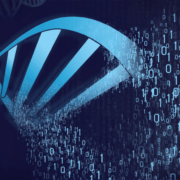
In biological terms, epigenetic modifications are chemical compounds that attach to DNA or its associated proteins, regulating gene activity without altering the underlying sequence of As, Ts, Cs, and Gs. These modifications are vital for everything from cellular differentiation in a developing embryo to our body’s daily response to its environment.
DNA Methylation: The Body’s Biological Scribe
One of the most stable and well-studied epigenetic mechanisms is DNA methylation. This process involves the addition of a small chemical group, a methyl group (CH3), to a specific site on the DNA molecule—most commonly a cytosine (C) base that is followed by a guanine (G) base, known as a CpG site.
When a CpG site in a gene’s promoter region is heavily methylated, it often acts like a “stop” sign, effectively silencing that gene by preventing the cellular machinery from reading it. Conversely, a lack of methylation typically permits gene expression. This on/off switching is a fundamental process for normal development and cellular function. The intricate pattern of methylation across the genome is known as the “methylome.”
The Epigenetic Clock: Tracking Time in Our Cells
Here is where the forensic application comes into focus. In the early 2010s, researchers like Professor Steve Horvath discovered something remarkable: the methylation status of certain CpG sites across the genome changes in a highly predictable, linear fashion with chronological age. Some sites become progressively more methylated with age, while others become less so.
This discovery gave rise to the concept of the “epigenetic clock.” By creating panels of these age-correlated CpG markers and building sophisticated statistical models, scientists can analyze the methylation pattern from an unknown individual’s DNA and calculate a highly accurate estimate of their age. It’s a biological timestamp, recorded directly onto the genome, that provides a far more precise"Precise" refers to the degree of closeness or consistency between multiple measurements or values taken under the same conditions. It indicates how well these measurements agree with each other, regardless of whether they are accurate Read Full Definition metric than many traditional anthropological methods.
The Core Forensic Process of Epigenetic Age Estimation in Detail
Translating this elegant biological concept into a reliable forensic tool requires a meticulous and validated laboratory workflow. As an analystA designated person who examines and analyzes seized drugs or related materials, or directs such examinations to be done; independently has access to unsealed evidence in order to remove samples from the evidentiary material for Read Full Definition, my work involves carefully navigating each stage to ensure the data Information in analog or digital form that can be transmitted or processed. Read Full Definition is robust and the interpretation is sound. Here’s a detailed breakdown of the process.
Information in analog or digital form that can be transmitted or processed. Read Full Definition is robust and the interpretation is sound. Here’s a detailed breakdown of the process.
Stage 1: Sample Selection and Preparation
The success of any DNA analysis hinges on the quality of the starting material. In cases involving unidentified remains, we are often dealing with skeletonized bodies where soft tissues have long since disappeared due to the stages of decomposition. This is where the resilience of bone and teeth becomes invaluable. These hard tissues act as natural containers, protecting cellular material from environmental insults and microbial contaminationContamination - The unwanted transfer of material from another source to a piece of physical evidence. The inadvertent touching of a weapon, thereby adding fingerprints to it is an example of evidence contamination. Read Full Definition far better than other tissues.
Our approach to DNA analysis from bone and dental tissue is highly selective. We often target dense, cortical bone from the femur or petrous portions of the temporal bone, as well as teeth—particularly molars—which house a rich source of DNA in the dental pulp.
The preparation begins with rigorous cleaning of the sample’s surface to remove potential contaminants. The tooth or bone fragment is then cryogenically milled into a fine powder. This pulverization dramatically increases the surface area, allowing the chemicals used in the next stage to efficiently access the bone matrix and release the DNA from the cells (osteocytes or odontoblasts).
Stage 2: DNA Extraction and Bisulfite Conversion
With the sample prepared, we proceed to DNA extraction. The bone or tooth powder is incubated in a lysis solution containing enzymes and detergents that break down cellular structures to release the nuclear DNA. Recent research from institutions like NJIT’s ForenBios Lab has shown that optimizing this step is critical. For instance, extending the lysis incubation to 24 hours can significantly improve DNA yield and quality from challenging dental samples, a simple procedural tweak with a major impact on downstream success.
Once the pure DNA is isolated, we perform the cornerstone of methylation analysis: sodium bisulfite conversion. This clever chemical treatment is what allows us to “see” the methylation marks. Bisulfite reacts with cytosine bases, converting them into uracil (which is later read as thymine by sequencing instruments). However, if a cytosine is methylated, it is protected from this chemical reaction and remains a cytosine.
The result is a new DNA sequence where every unmethylated ‘C’ is now a ‘T’, while every methylated ‘C’ remains a ‘C’. This artificially created sequence difference is what we will ultimately measure.
Stage 3: Amplification and Sequencing
Following conversion, the DNA is often too sparse for direct analysis. We use the Polymerase Chain ReactionA method of making multiple copies of a DNA sequence involving repeated reactions with a polymerase. Read Full Definition (PCR) to amplify the specific CpG sites that are part of our age-estimation panel. This creates millions of copies of the target regions, ensuring we have enough material for sequencing.
The amplified DNA is then analyzed using Massively Parallel Sequencing (MPS), also known as Next-Generation Sequencing (NGS). This technology is a game-changer. It allows us to sequence millions of DNA fragments simultaneously, providing two critical pieces of information for each CpG site:
- Sequence: We can confirm we are looking at the correct genomic location.
- Quantification: We can count the number of fragments that have a ‘C’ (indicating methylation) versus a ‘T’ (indicating no methylation).
This provides a quantitative methylation level for each marker—for example, “CpG site X is 82% methylated in this sample.”
Stage 4: Analysis & Interpretation
The raw sequencing data—a massive file of genetic information—is where the final piece of the puzzle comes together. This data is fed into a specialized bioinformatics pipeline. The pipeline aligns the sequences to a reference genome and calculates the precise methylation percentage for each targeted CpG site.
This methylation profile is then plugged into a predictive model. This model is a machine-learning algorithm that has been “trained” on thousands of methylation profiles from individuals of known chronological age. By comparing the unknown sample’s methylation pattern to the patterns in its training set, the algorithm computes the most probable age. The final report will provide an age estimate along with a margin of error, for example: 42.3 ± 3.1 years. This statistical rigor is what makes the evidence Evidence is any form of proof, such as objects, materials, or scientific findings, presented to establish or disprove a fact in a legal proceeding. It is used to reconstruct events and link or exclude individuals Read Full Definition quantifiable and scientifically robust.
Evidence is any form of proof, such as objects, materials, or scientific findings, presented to establish or disprove a fact in a legal proceeding. It is used to reconstruct events and link or exclude individuals Read Full Definition quantifiable and scientifically robust.
Advanced Applications & Modern Implications
The power of forensic epigenetics is only just beginning to be realized. While age estimation is its most mature application, the field is rapidly expanding, offering new avenues for generating investigative leads from biological evidenceBiological evidence - physical evidence such as bodily fluids that originated from a human, plant or animal. Read Full Definition.
Beyond Age: What Else Can Epigenetics Tell Us?
The same principles used for age estimation can be applied to other investigative questions. Researchers are actively developing epigenetic tests to:
- Identify Body Fluids: Different tissues (blood, saliva, semen) have unique methylation patterns, allowing scientists to determine the source of a DNA sample, which can be crucial for reconstructing a crime.
- Differentiate Identical Twins: While identical twins share the same DNA sequence, their epigenomes diverge throughout their lives due to different environmental exposures and lifestyle choices. In rare cases, this could provide a means to distinguish between them as suspects.
- Infer Lifestyle Factors: Preliminary research suggests that chronic behaviors like heavy smoking or alcohol consumption may leave a detectable signature on the methylome, potentially providing valuable intelligence.
Case Study: The NJIT ForenBios Lab Breakthroughs
The practical advancement of forensic epigenetics happens in academic and research labs like the ForenBios Lab at the New Jersey Institute of Technology (NJIT). As detailed in recent publications, work by researchers like Ph.D. candidate Maria Castagnola is pushing the boundaries of what’s possible with compromised samples.
One major finding from her team is the development of a method to simultaneously extract DNA, RNA, and proteins from a single tooth. This is a paradigm of efficiency. From one tiny piece of evidence, an investigator could get a DNA profile for identification, an epigenetic age estimate from the DNA, and potentially information for estimating the postmortem intervalThe post-mortem interval (PMI) is the time that has elapsed since an individual's death. When the time of death is not known, the interval may be estimated, and so an estimated time of death is established. Read Full Definition from the RNA’s degradation pattern. This “multi-omics” approach maximizes the information gleaned from precious, limited evidence. Furthermore, their validationValidation, often referred to as method validation, is a crucial process in the laboratory when introducing a new machine, technology, or analytical technique. It involves a series of systematic steps and assessments to ensure that Read Full Definition of a 24-hour lysis incubation period provides a simple, cost-effective protocol enhancement that labs worldwide can adopt to overcome the challenges of DNA degradation.
Challenges, Controversies, and the Future of Forensic Epigenetics
Like any new technology, forensic epigenetics faces hurdles. The predictive models must be trained on large, diverse datasets to ensure they are accurate across different ancestral populations. The cost and technical complexity of MPS are still barriers for some public crime labs. And critically, the legal system is still becoming familiar with this type of evidence, meaning its admissibility in court is determined on a case-by-case basis through rigorous scientific testimony.
Despite these challenges, the future is bright. As costs decrease and protocols become standardized, epigenetic analysis will likely become a routine part of the workflow for unidentified remains and complex cold cases. The precision it offers is simply too powerful to ignore, promising to give names to the nameless and bring long-awaited answers to grieving families.
Conclusion
Forensic epigenetics represents a monumental leap forward in forensic science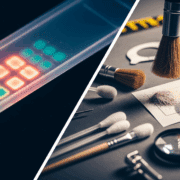 Discover the fascinating field of Forensic Science, the application of scientific principles to legal matters. This post delves into its many disciplines, from DNA analysis to crime scene investigation, its importance in the justice system, Read Full Definition. By looking at the subtle chemical annotations that adorn our DNA, we have unlocked a powerful biological clock that records the passage of time in our very cells. The journey from a pulverised bone fragment to a precise age estimate is a testament to the synergy of molecular biology, analytical chemistry, and advanced data science.
Discover the fascinating field of Forensic Science, the application of scientific principles to legal matters. This post delves into its many disciplines, from DNA analysis to crime scene investigation, its importance in the justice system, Read Full Definition. By looking at the subtle chemical annotations that adorn our DNA, we have unlocked a powerful biological clock that records the passage of time in our very cells. The journey from a pulverised bone fragment to a precise age estimate is a testament to the synergy of molecular biology, analytical chemistry, and advanced data science.
This is more than just an academic exercise; it is a tool with profound human impact. For the thousands of unidentified victims in morgues and evidence rooms across the country, it offers a new chance at having their story told. For investigators, it provides actionable intelligence to narrow the search and focus resources. And for society, it reinforces the principle that even in the oldest and coldest of cases, science can find a way to speak for the dead and deliver justice.
FAQs:
How accurate is epigenetic age estimation?
Current models can predict chronological age with a mean absolute error of approximately 3 to 5 years. The accuracy can be affected by the type and quality of the biological sample and the specific model used, but it is generally far more precise than traditional anthropological methods for adult remains.
Can this method be used on living people?
Yes. The technology works on DNA from any source, including blood or saliva from a living person. While its primary forensic use is for unidentified remains, it has research applications in clinical settings for studying the difference between chronological age and biological age (ageing).
Why use teeth and bones instead of blood?
In forensic cases involving decomposed or skeletonized remains, teeth and bones are often the only viable sources of DNA. Their dense, mineralized structure protects DNA from environmental factors like moisture, temperature fluctuations, and microbial activity that would rapidly destroy DNA in soft tissues like blood.
Is forensic epigenetics admissible in court?
The admissibility of forensic epigenetic evidence is still evolving and is determined by legal standards such as the Daubert standard in the United States. It requires demonstrating that the method is scientifically validated, has a known error rate, has been peer-reviewed, and is generally accepted in the scientific community. While it is increasingly used for investigative leads, its use in trial proceedings is becoming more common as the science matures.
What’s the difference between genetic age and epigenetic age?
“Genetic age” isn’t a standard term, but your genetic code (DNA sequence) is established at conception and remains the same in all your cells for life. “Epigenetic age,” or biological age, is a measure of age based on your epigenetic patterns, like DNA methylation. It reflects the cumulative impact of development, lifestyle, and environment on your genome and can sometimes differ from your chronological age (time since birth).
Can forensic epigenetics differentiate between identical twins?
In theory, yes. Identical (monozygotic) twins are born with virtually identical DNA sequences. However, as they age, their epigenomes begin to diverge due to different life experiences, environments, and stochastic (random) changes. While challenging, analysing these subtle differences in their methylation patterns could potentially distinguish one from the other.



